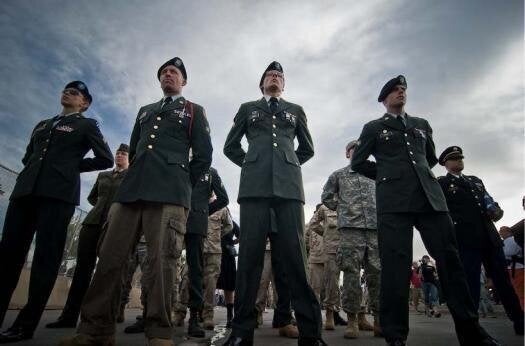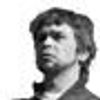
On August 27th, 2008, Rage Against the Machine, joined by the MC5's Wayne Kramer and opening acts State Radio, The Coup, and the Flobots, took the stage at the Denver Coliseum as part of the Tent State Music Festival to End the War. The free concert was one part of a new model of protest that would climax hours and miles later outside the Democratic National Convention. We termed it the "concert>action and double bind" model. It was effective. We won. And it should be used again.
For nearly a year a small group of us had been organizing for this day. The country was just ending eight years under Bush and we knew a protest outside the Democratic National Convention (DNC) would not be popular, regardless of our aims. We wanted Obama to take stronger stances against the war and to commit to withdrawal. We wanted our veterans taken care of. And we wanted reparations for Iraq. Practically though, our intentions were worth nothing without support and pressure. We needed a way to build both.
In March of 2008, following a concert by Tom Morello in support of Iraq Veterans Against the War's (IVAW) Winter Soldier testimonies, a group of IVAW members were sitting around a table at an IHOP with Morello. Jeff Englehart, an Iraq combat vet and IVAW member was blunt. "Tom, if Rage Against the Machine is really a revolutionary band, they'll play a free show at the DNC to support us."
Tom looked at Jeff. "You're right."
Over the next few months we pulled together a rag tag bunch of organizers that encompassed the entirety of the left. Pacifists and progressive Democrats from the American Friends Service Committee, Green Party members, anarchists who were already organizing as Unconventional Denver, student organizers from Students for a Democratic Society and Tent State University, socialists from the International Socialist Organization, and old veteran organizers from Vietnam Veterans Against the War. The core of this coalition were the youth.
We organized together and independently. We entertained fantastical possibilities and created real ones. Most importantly, we respected each other, we allowed a diversity of tactics to be organized, and supported each others actions. We fought the state in the courthouses, with JoAnna "Jojo" Pease representing us, through the media, and in the streets. We developed medic teams under the direction of Zoe Williams and legal teams with the ACLU.
One of the more clever demonstrations was a press conference by Unconventional Denver where the city's anarchists offered to call off their protests if the city redirected the $50 billion it had been allotted for security towards the city's schools, infrastructure, and services.
Throughout the summer, a few of us were having weekly meetings with the Mayor of Denver, the Chief of Police, and almost daily meetings with a very sympathetic city official. I still think it's important to engage the authorities. To seem (and be) reasonable while giving them nothing and agreeing to even less. We repeatedly denied to the Mayor and the police that Rage was going to play until we publicly announced it a couple weeks before the convention.
It's also very important to remember that access to power is not power. The meetings with the Mayor (now the Governor of Colorado) and with the police were informative and helpful. But they were also a game. After weeks of trying to negotiate on site camping for the thousands of people who would be coming to protest, we found out the Mayor had never really considered our request from a snarky comment he made on a morning radio show. Frustration and anger were quickly turned to determination as we discovered a loop hole.
The city was building a fenced off "protest zone" out of site of the convention center that we lovingly referred to as the "Freedom Cage." A quirky decision by the city had made the "protest zone" open and accessible 24 hours a day through the run of the convention. We decided that was our answer.
The following day we held a press conference, surrounded by uniformed Iraq war veterans, a fife and drummer in full Revolutionary War regalia playing patriotic tunes, and Zoe dressed as a 1950's housewife serving American apple pie to the reporters. We renamed the "protest zone" the "Freedomville Shanty Town" and announced that each night of the convention we would march all the protestors to the shanty town to "feign sleep" as an act of protest (sleeping was prohibited by the city, technically.)

Within an hour of the press conference the Mayor's office was on the phone for a meeting. It was too late though. We had found a solution and embarrassed the city by exposing it's ridiculous treatment of free speech and assembly. We had nothing more to negotiate. We spent each night of the convention there. We went to bed to bedtime stories told to us by the Dead Kennedy's Jello Biafra (who had to walk four blocks on crutches to meet us) and would wake to Secret Service members peering at us through the razor-wire fences.
Once the concert was announced, we had our support. The Coliseum held 15,000 people. Now we had to figure out how to create the pressure.
Jeff came up with the idea for a "double-bind," a military term that forces the target to take the least harmful path to themselves when presented with two undesirable choices. We couldn't simply make a request to the Democratic Party and Obama to meet with the veterans and hear their grievances (though we did that too.) They had no desire or reason too. We had to create a situation were they met with the veterans or we destroyed Obama's candidacy. A "double-bind."
Local IVAW members Jeff Englehart, Bobby Joe Grubb, Garett Reppenhagen, Mike Flaherty, Ben Schroader, Josh Earl, and David Mann developed the idea that the veterans would lead a march from the concert to the convention, fully uniformed, in military cadence formation, holding folded American flags. They would demand entrance to the convention to speak with Obama and deliver their demands. They would not back down.
The campaign would then be presented with a choice between the reasonable demands of the veterans, or images broadcast across the nation of uniformed veterans being gassed and beaten by police outside the Democratic convention.
During the concert, in between acts, we re-enforced our message repeatedly. We explained the tactics we would use. We made the crowd feel they were a part of a very special moment in history. And they were. We placed thousands of hand painted signs and banners in piles outside the exits, made by hundreds of volunteers over the weeks who had traded a few hours work for guaranteed entry.
As Rage was ending their set with a inspired rendition of "Killing in the Name" the veterans took their place in formation. As the concert let out, nearly all of the attendees fell in line behind the veterans, with the bands and artists, alongside organizers, leading the protestors behind the vets with a large "Support GI Resistance" banner.

Hours and miles later, outside the convention center, the veterans were in a stand off with over 700 riot police. The protestors stood behind them in support. Our police liaison, Lt. Porter came over and informed me that the police were going to gas us in three minutes. I passed on the information to the veterans and they made the decision to march against the police line.
As the veterans began to move forward we noticed the police were removing two officers from the line because they were crying. The air had the feel of a tense cinematic climax scene. And then with only a minute to spare, a representative of the party, his face flush and frantic, came running up to the line. They would allow the veterans in. They would meet to hear their demands.
It is one of the only times in my life I have seen a protest achieve its aims immediately. We didn't end the war that day. That wasn't the aim of the protest. The aim was force veterans issues and the war into the convention. To force Obama to hear us. We did that. And Obama's campaign continues to reach out to the veterans of IVAW following that day.
In the months that followed we spoke to various well known artists who could fill stadiums about the model and how to move forward. But interest had died. Obama had won the election and the anti-war left went home.
But we are in a time again were people want to stand up. Against police brutality and racism. Against austerity. Against the selling off of our past and our futures. We need to consider this model again. Imagine if Jay Z held a concert in DC, deferring to organizers for messaging and tactics, for #BlackLivesMatter? They could take the Capitol building. Thousands of activists occupying the US Senate and House demanding black lives matter to them too.
Or Roger Waters in London. With anti austerity demonstrators shutting down Parliment? Those old bastards would soil themselves to try and resolve it. Imagine if this kept happening. If it couldn't be stopped? You could start a revolution.
Artists are the most powerful people in our societies. They influence public opinion. They make culture. The define our reality. Donating money's nice. But if artists want to really make an impact, they need to be on the front lines.
Images blogger's own
